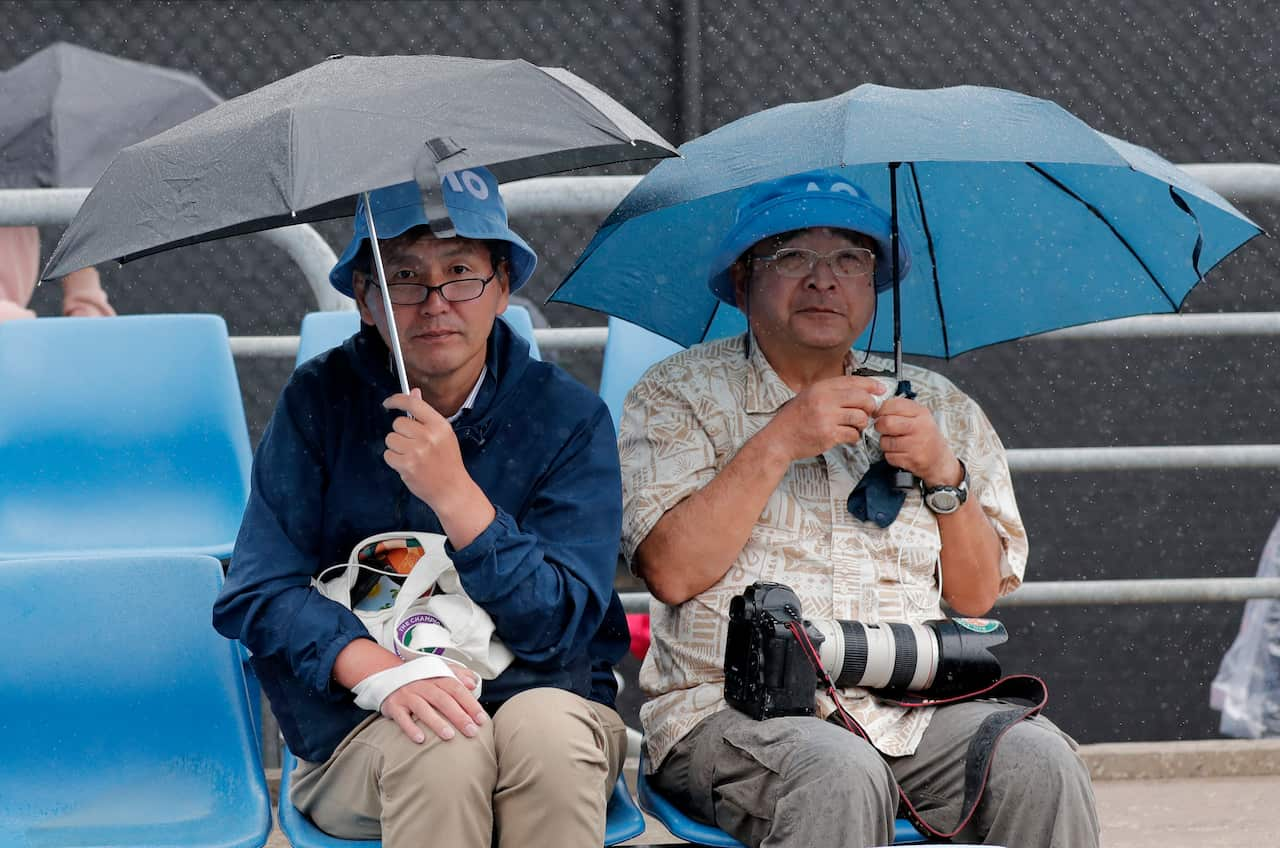
Australian Open Hampered by Melbourne's Relentless Flooding and Hailstorm
Flooding Suspends Play, Raising Safety Concerns
The 2023 Australian Open, a pinnacle event in the tennis calendar, has been disrupted by the torrential rainfall and hailstorm that have battered the city of Melbourne. The extreme weather conditions forced the suspension of play for several hours, raising concerns about the safety of players and spectators.
The relentless downpour resulted in the evacuation of the Rod Laver Arena, the tournament's main venue, after water began leaking into the stadium. Several other courts also experienced flooding, making it impossible to continue play. The suspension lasted for over four hours, leaving players and fans stranded in the rain-soaked stands.
Hailstorm Adds to the Mayhem
As the rainfall subsided, the weather took a turn for the worse as a hailstorm hit Melbourne. The golf ball-sized hailstones caused further disruption to the tournament, damaging the roofs of several courts and posing a safety hazard to players and fans.
The hail also played havoc with the playing surface, which had to be inspected and repaired before play could resume. The courts were eventually deemed playable, but the delays had already taken their toll on the tournament schedule.
Tournament Organizers Criticized
The decision to suspend play was met with mixed reactions. Some spectators criticized the organizers for not acting sooner, arguing that the safety of players and spectators should have been the top priority.
Tournament organizers defended their decision, stating that they had been continuously monitoring the weather conditions and acted as soon as they deemed it necessary. They also pointed out that the extreme weather was beyond their control and that safety had to be the overriding concern.
Impact on Players and Fans
The weather disruptions have had a significant impact on the players and fans. Players who were scheduled to play on the suspended courts had their schedules disrupted, while fans who had purchased tickets were left disappointed.
The delays have also put pressure on the tournament organizers to make up for the lost time. The tournament schedule is now being revised to accommodate the suspended matches, and it remains to be seen whether all matches will be able to be played within the allotted time frame.
Environmental Concerns
The extreme weather conditions that hit Melbourne serve as a stark reminder of the impact of climate change. The torrential rainfall and hailstorms are becoming more frequent and intense, and their effects are being felt across the globe.
The Australian Open is just one example of how sporting events are being affected by extreme weather. Other major events, such as the Olympics and the FIFA World Cup, have also faced disruptions due to climate-related disasters.
Conclusion
The Australian Open's suspension amidst Melbourne's torrential flooding and hailstorm highlights the complexities of holding major sporting events in the face of increasingly extreme weather conditions. Safety must be the top priority, but organizers must also find ways to minimize the impact of weather disruptions on players, fans, and the overall tournament.
The extreme weather events that have affected Melbourne serve as a wake-up call for us to address the urgent threat of climate change. By taking action to reduce greenhouse gas emissions and mitigate its effects, we can help to ensure that future sporting events are not disrupted by extreme weather.

Comments
Post a Comment